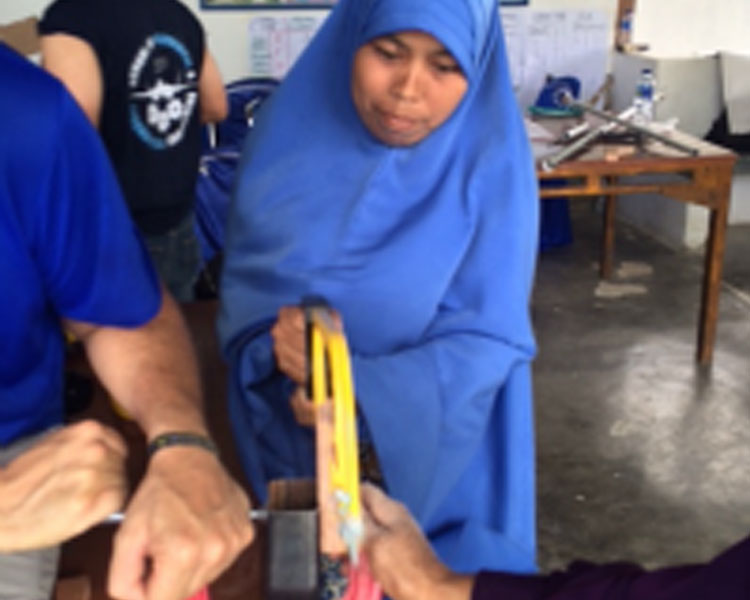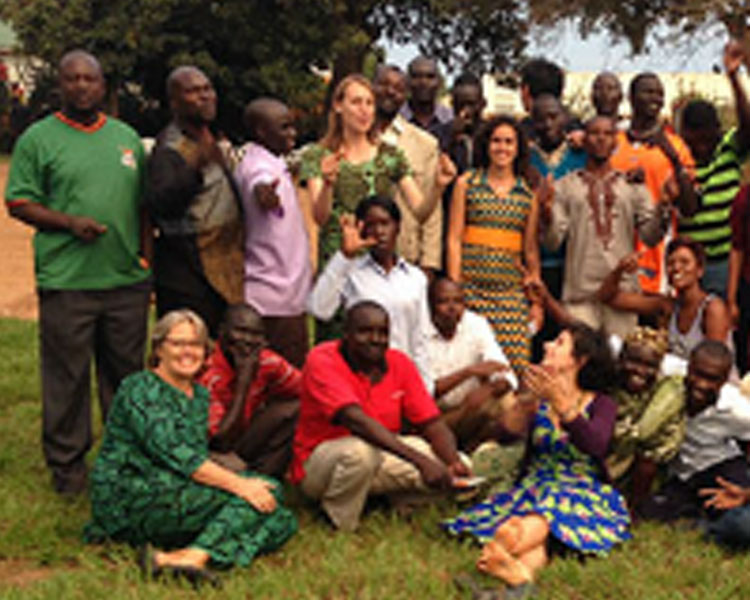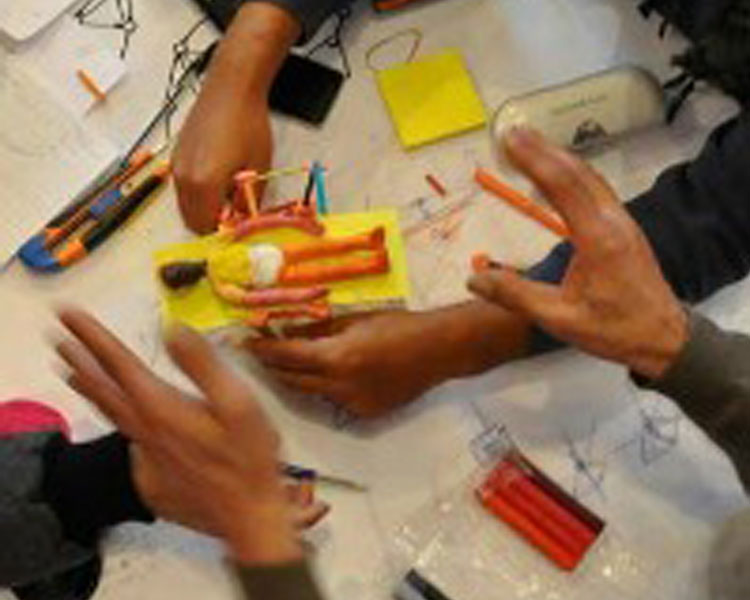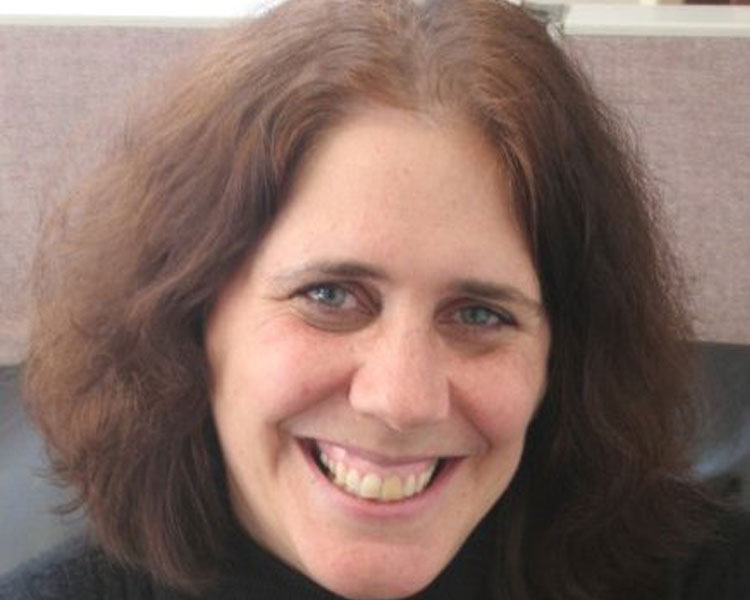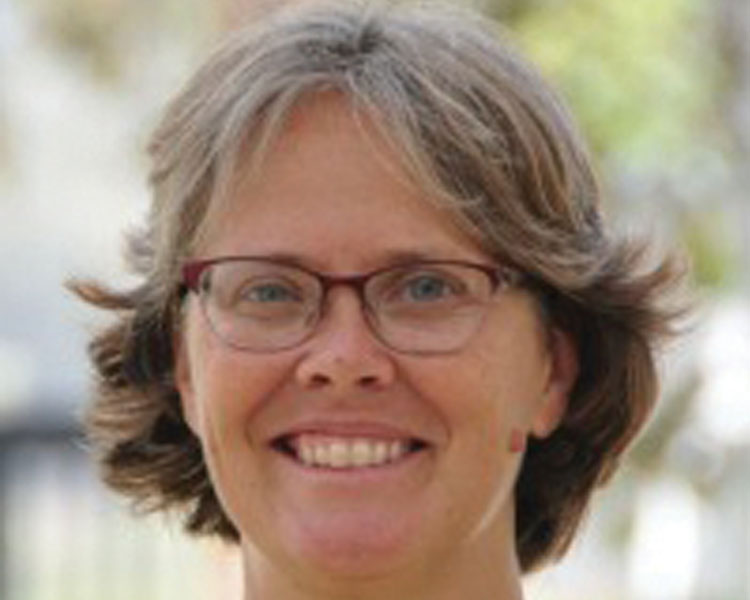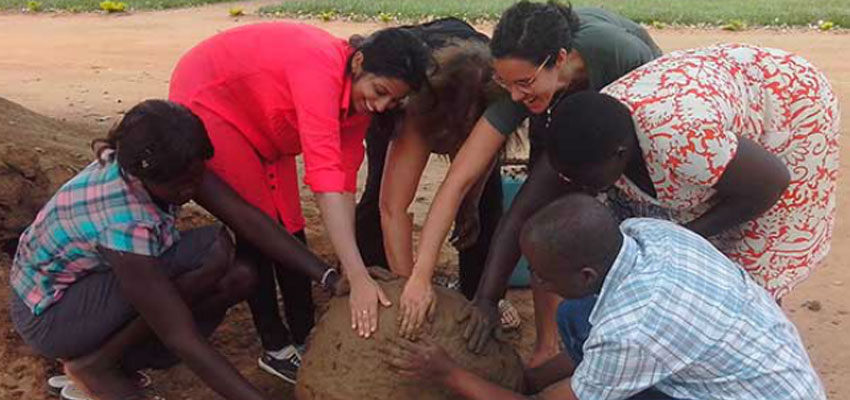
A completely new course
Given the unprecedented refugee crisis of over 60 million people displaced by crisis in the world today, aid organizations and governments are stretched beyond their resources to cope. Refugees have always had to innovate and be creative to survive, but humanitarian organizations are now turning to innovations in participatory design as a way to provide better aid.
D-Lab founder and co-director Amy Smith and I developed the course Innovation in Relief, Recovery, and Rebuilding from our experiences in humanitarian situations, with refugees and displaced in camps because of armed conflict or disasters—people returning home after war—and displaced people trying to eke out a living in cities and towns. We feel it is important to use our experiences, and growing use of D-Lab’s vision of participatory design in relief settings, and contextualize this work within current innovations in humanitarian aid.
Humanitarian innovation in northern Uganda
I began to make a connection between innovation and humanitarian work when I first collaborated with D-Lab in 2009. I was working with a nongovernmental organization supporting people who were returning home in Northern Uganda after almost 20 years of war. Since people were returning to razed villages and destroyed landscapes with practically no infrastructure, we were looking to identify simple technologies or products people could use to make it easier to rebuild their lives.
After learning about D-Lab’s work, I invited Amy and D-Lab associate director Kofi Taha, who was a graduate student at the time, to train communities to make sustainable technologies for charcoal production, bicycle power, water filtration, and anything that could reduce women’s work processing food or transporting fuel and water.
Kofi and Amy came to the transit camps where people were waiting before they returned to their homes. They demonstrated some technologies and asked people what kinds of tasks could be alleviated with some kind of labor saving device. People came up with ideas like peanut threshers and sesame seed grinders and Amy and Kofi began to work with them on developing prototypes for these ideas, involving them in the building, and using their feedback
This was my first introduction to a participatory design process geared to listening to people and taking in their input. Traditional humanitarian response is usually constructed as a one-size-fits-all, to roll out a massive program and reach as many people as possible. This is done for efficiency’s sake but it’s not participatory and there is often very little input from the people on the receiving end—the refugees.
Bringing refugees and displaced people to the maker space
Amy and Kofi went on from teaching villagers to make technologies to training them to both design and build their own products and technologies. With others at D-Lab, they developed a training methodology called Creative Capacity Building (CCB). This approach promotes design by the intended beneficiaries and users. CCB empowered the people returning home after war in Uganda to be active creators of technology rather than simply passive recipients of technology. People not only made incredibly useful things—peanut threshers, water carts, solar phone chargers that could be powered by motorcycle batteries—that eased transition back home, they experienced a sense of pride and accomplishment in what they created. CCB gave people an increased sense of agency and belief in their ability to improve their situation. This is precisely what being a refugee or a displaced person often takes away from you—your sense of yourself and your own worth—and is precisely what CCB gives them back.
Refugees should not lose their right to participate in discussions about what kind of aid they get when they lose their homes. However, in my experience, traditional aid programs tend to not to engage refugees. I have worked in many conflict and emergency settings and continue to see technologies and products designed “for” refugees such as solar stoves, badly designed sanitation sites and housing, that cause problems when they could be changed to become real solutions. When humanitarian actors are not clear about culture, social mores, or the class and race lines in communities where they are working, the way in which they distribute relief can create, rather than solve, problems. For example, food distribution in many refugee situations is based on a nuclear family unit of husband, wife, and three to five children. But how does that distribution unit work in a polygamous society? Humanitarian actors are turning to innovation because they recognize that the one-size-fits-all approach is problematic and that they need to think creatively and look for new solutions. They are also looking to make better use of resources because resources are scarce.
Rethink Relief
Humanitarian innovation is still new and it is still mostly focused on design “for” people rather than design “with” or “by.” The Innovation in Relief, Recovery, and Rebuilding course builds on D-Lab’s involvement with Rethink Relief, a program that is exploring a three-pronged approach: training people in camps in the design process, designing products that address immediate needs, and developing an ecosystem of programs and partners with a holistic approach toward relief work.
The course
The course will begin with an in-depth review of the current refugee and displacement crisis and the overall humanitarian system. We will examine how the humanitarian system works—its shortcomings and gaps—with a focus on gender, inclusion, and well-being. Then, we will explore what is happening across the spectrum in humanitarian innovation and what that means in different settings. We will review D-Lab’s approach to innovation and grassroots participation, including Creative Capacity Building.
With that overall background, the class will divide into groups that each take a specific refugee situation to research as a case study. These will include Uganda, Colombia, and Ethiopia where Rethink Relief is developing work and the instructors can bring on-going real life experience from these sites into class discussions. There will be opportunities in the summer to work in some of the sites where Rethink Relief is beginning work. This course will be heavily influenced by the continuing work we are doing with Rethink Relief so it is a chance to learn from emerging situations.
For the course, Amy Smith and I have begun to collect the thinking around humanitarian innovation and put it in an overall framework. Students taking the course will have the opportunity to contribute to this work!
Email Martha Thompson.
Course page: Innovation in Relief, Recovery, and Rebuilding.
